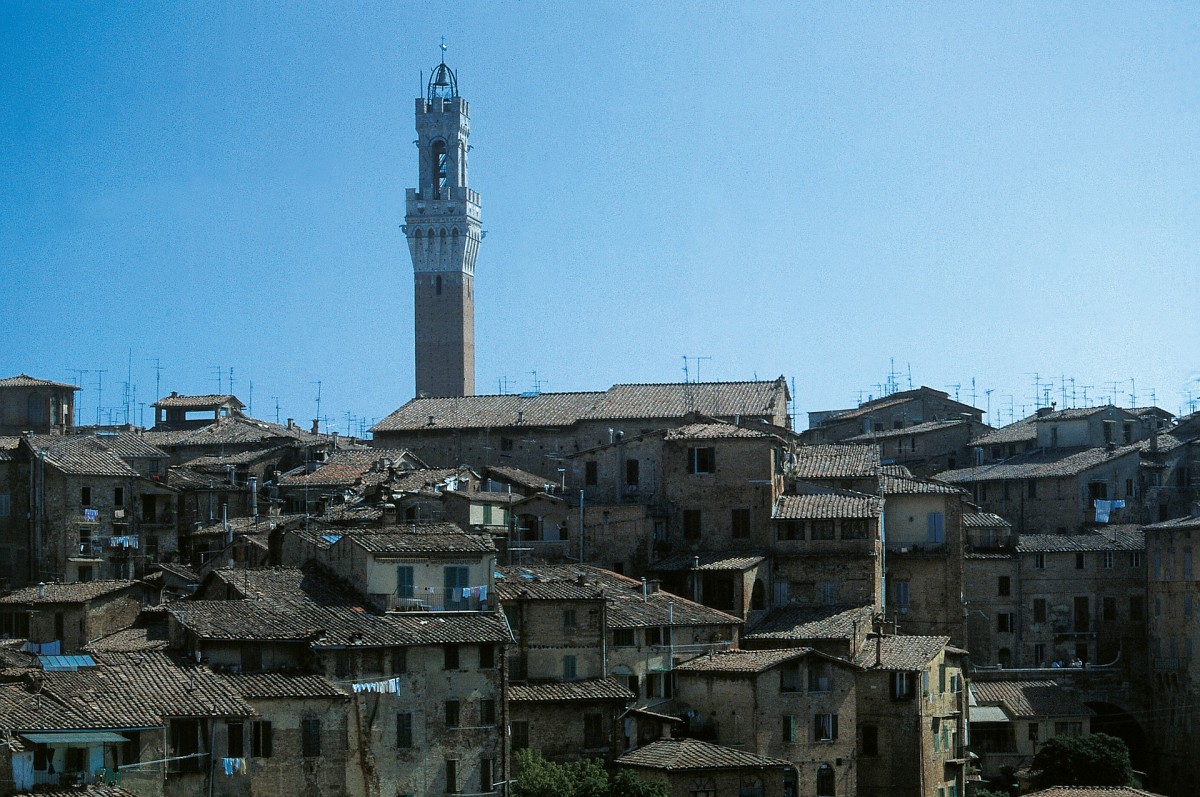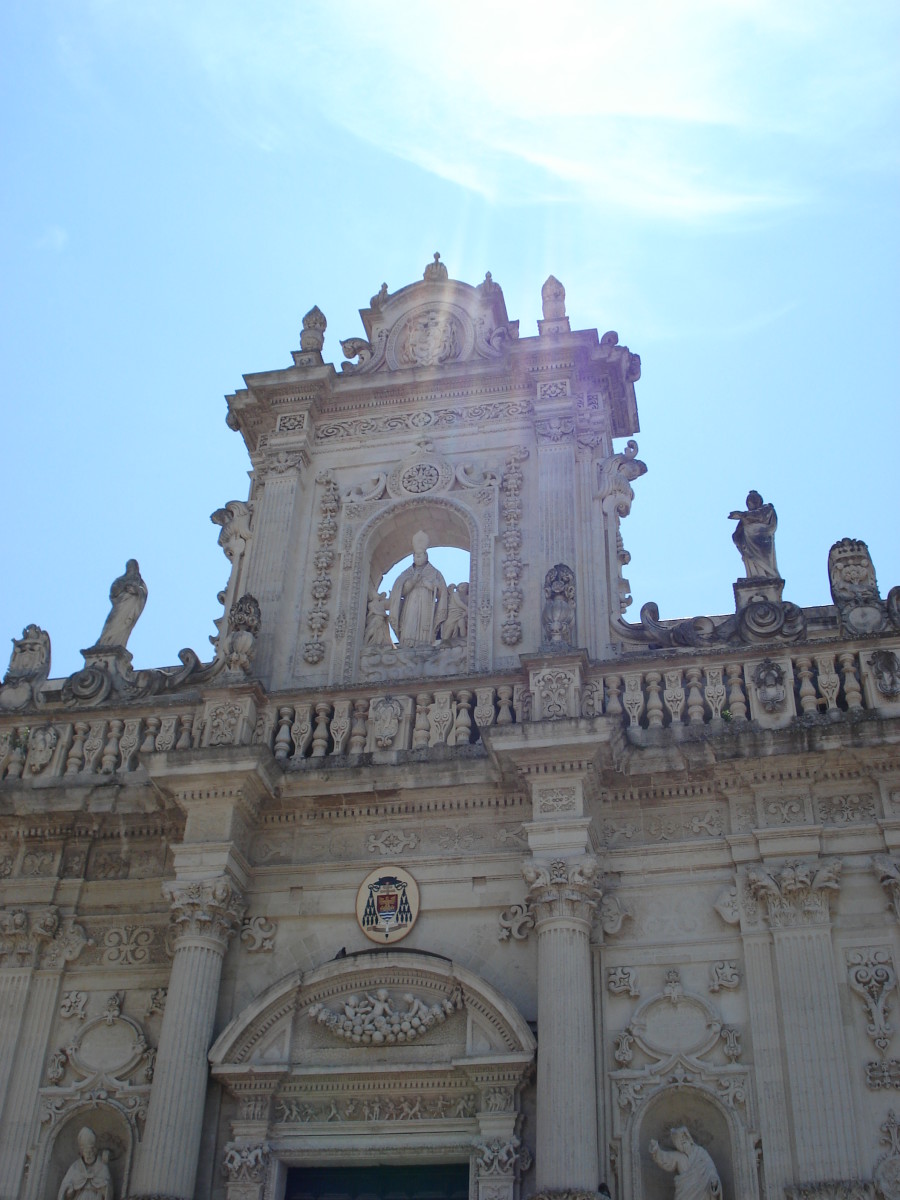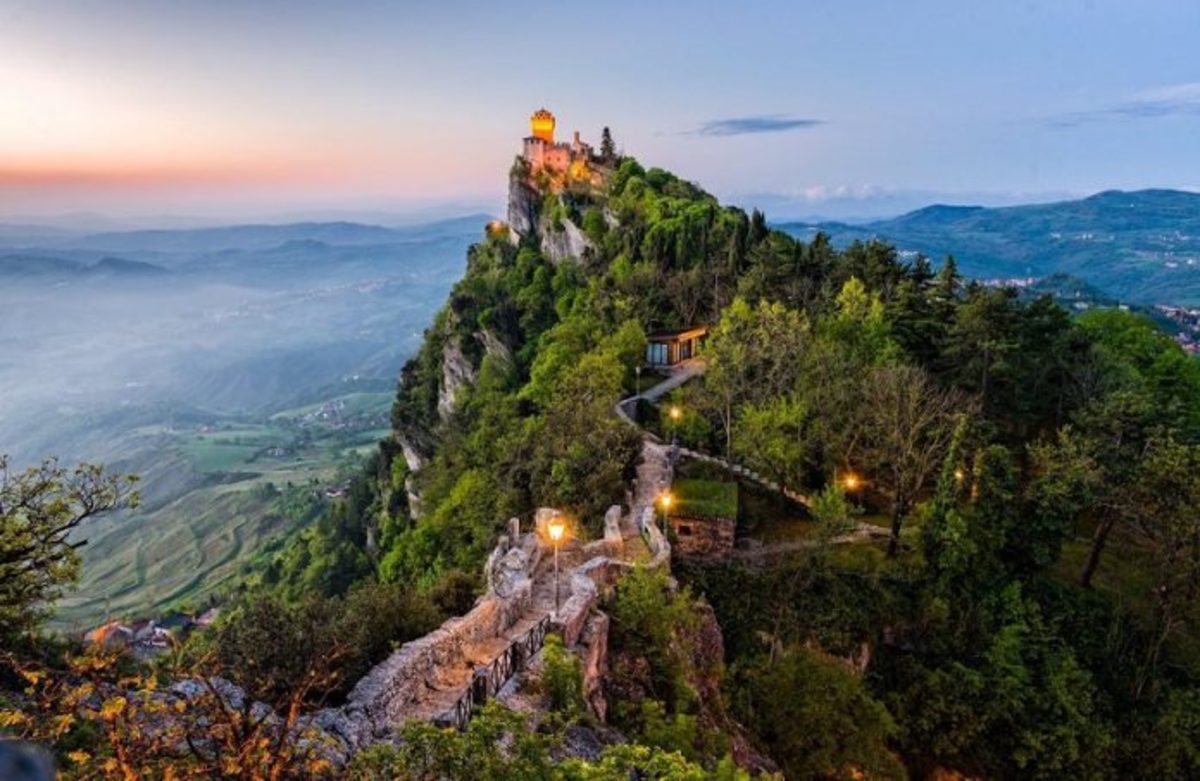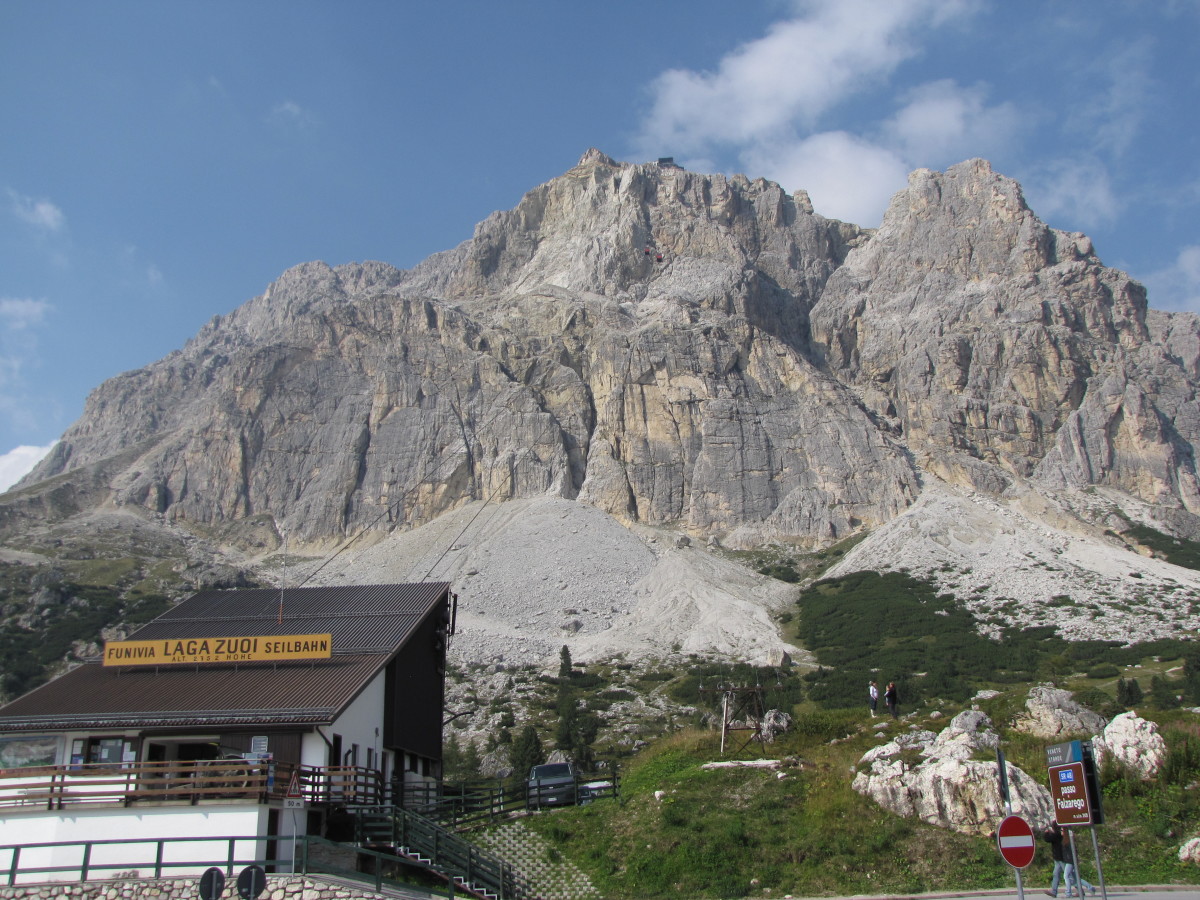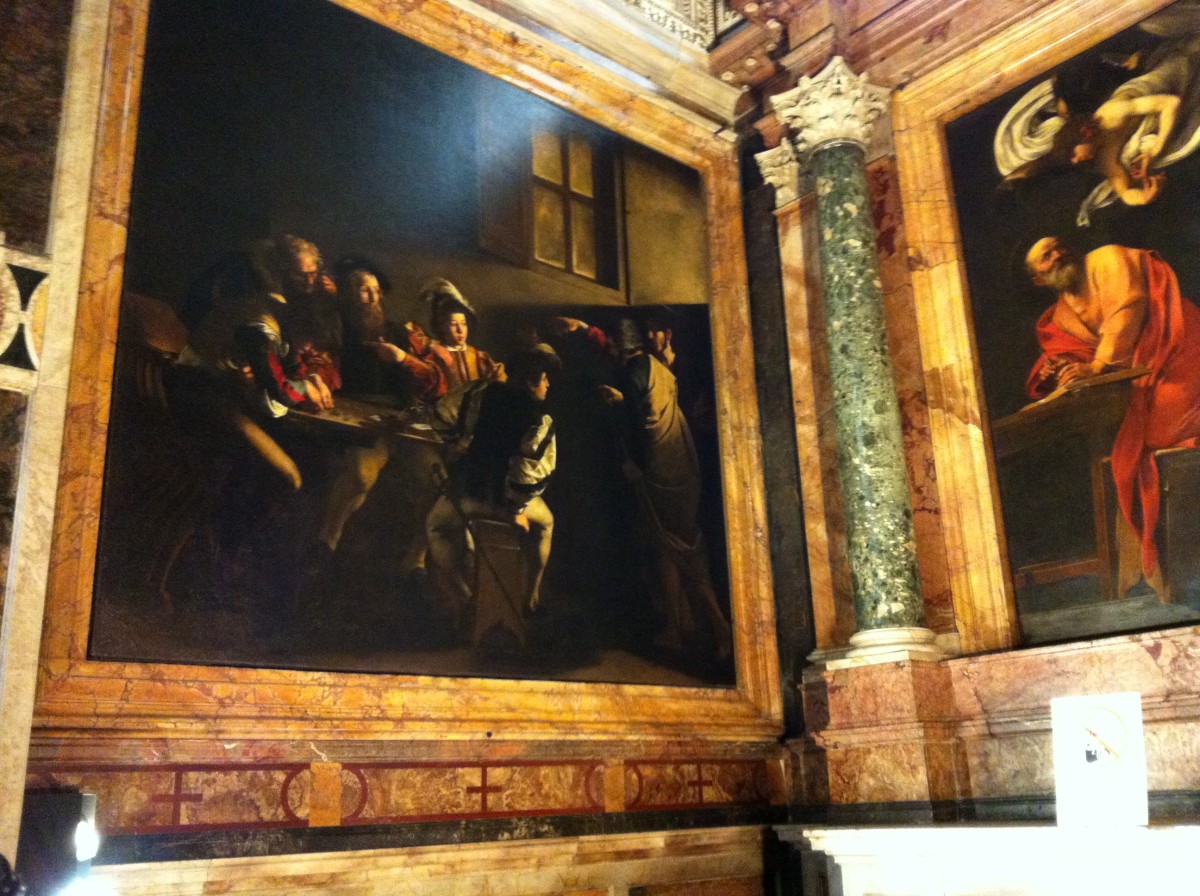A Guide to the Perfect Weekend in Pitigliano in Southern Tuscany, Italy
Pitigliano
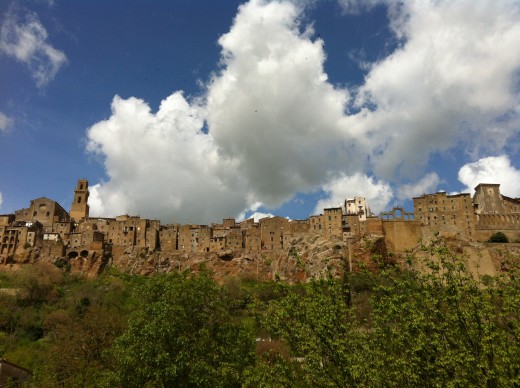
Pitigliano
The town of Pitigliano suddenly looms at you across a ravine as you drive through the wooded hills of Southern Tuscany. Straddling atop the plateau of 'tufo', Pitigliano strikes you initially as surreal - as a movie set for a medieval film, strong, ragged ancient. Yet as you twist through woods of Etruria towards it, crossing a carriage bridge over the river Lente the history of the town intrigues you. It's been standing there for thousands of years. Beneath the ground a network of Etruscan paths and caves still conceal routes that once linked Pitigliano to Rome.
Here is a guide to the perfectly fascinating weekend in Pitigliano in Southern Tuscany where you may wander through thousands of years of history, eat wonderful meals in local trattorias, and recoup in the open-air, natural springs spa of Saturnia. Included in this article you can find information on
- A brief history of Pitigliano from Neolithic times until more recently
- Wander round the Palazzo Orsini and the museums of the town in pictures
- Visit the narrow streets of Little Jerusalem, a Jewish ghetto - since the Jewish people moved here in the 17th century
- Read the poem next to the bronze statue of a man and his donkey 'Il Villano' by Italo Funghi.
- Local hotels and bed and breakfast houses, also called 'agritourismi'
A Cellar Cut into the Tufo Rock in Little Jerusalem in Pitigliano
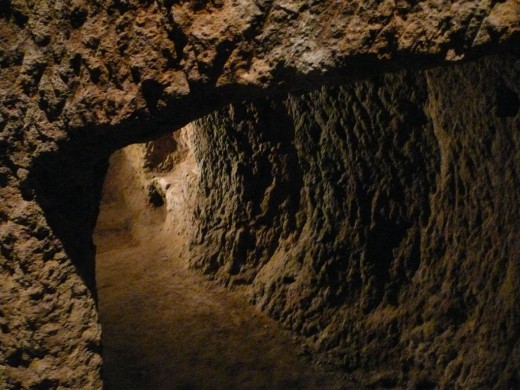
Ancient History of Pitigliano
Once an Etruscan center (VIII BC until VI BC) it was probably called Catetra.
The Etruscan, the Roman and the Medieval epochs all left their traces which you can feel and see and find out more about in the labyrinth of little streets inside the city center, in the museums and underneath in the pockmarked tufo butte where each of the inhabiting civilizations dug tunnels, wells, tombs, 'cantinas' and even dovecots, creating a city under a city.
Pitigliano hasn't changed for centuries. There are no modern outcrops, no post war housing estates or supermarkets, no suburbia or town extension. You stumble upon Pitigliano and root directly into the past.
Museums of Pitigliano and Little Jerusalem
The Archeological Museum of Etruscan Civilization of Poggio Buco has Bronze Age findngs and a warehouse-laboratory which restores 7th Century ceramics
Palazzo Orsini in Piazza dell Reppublica - Medieval Museum of the Renaissance, in the Orsini Fortress in 19 rooms built between 14th and 15th century
Jewish Museum, Synagogue and Ghetto
Palazzo Orsini Entrance
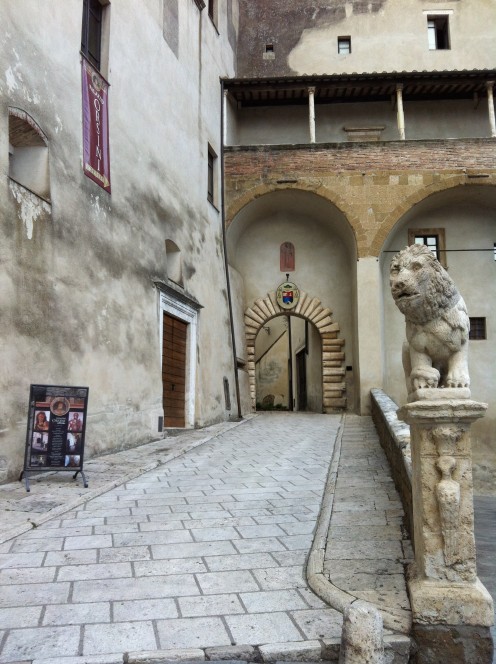
Museum Poster Palazzo Orsini
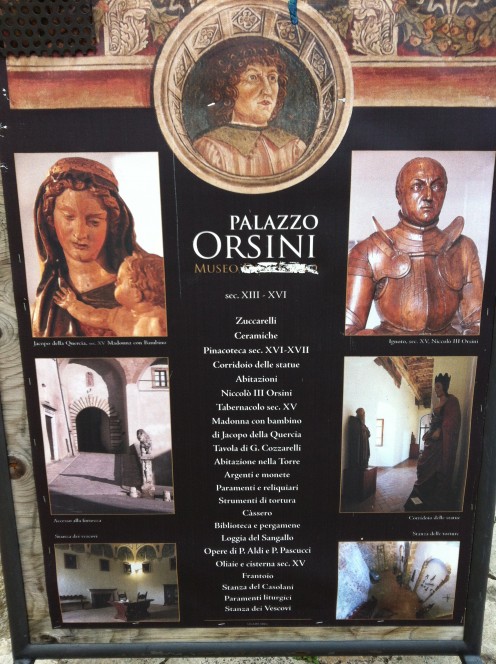
Etruscan Sites to Visit in Pitigliano
Between the the 1st century BC and 11 century AD the Romans, who absorbed the ancient Etruscan peoples into their own culture, built on the Pitigliano plateau.
In 1188 Pitigliano appeared as a fortified village owned by the Aldobrandeschi counts who had come from the northern Lombard regions and now ruled the Southern Tuscany area.
The Museo Civico Archeologico della Civiltà Etrusco in Piazza Fortezza Orsini 59/c (Tel 0564 614 067 or 0564 614074) has a well worth exhibition of findings that go back to ancient times.
The Museo all'Aperto Alberto Manzi, on the Strada Provincial Pantano has re constructed the "City of the Living" and "City of the Dead".
In the 'City of the Living' there is a re-constructed hut and an archaic house to describe the everyday life of the Etruscans. 'The City of the Dead' is in an area of the Necropolis which offers themes on cult, burial and physical-spirituality.

Palazzo Orsini. The Courtyard
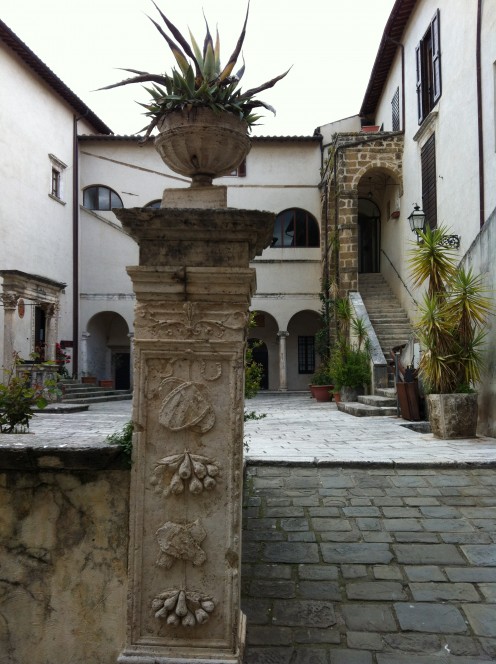
Medieval and Renaissance Sites to Visit in Pitigliano
The Orsini, a Roman noble family with a lot of influence in medieval Italy, conquered Siena and nearly all of the Maremma area of Southern Tuscany in 1313, moving their capital to Pitigliano, dislodging the Aldobrandeschi family.
Enriched by the patronage of Niccolo 111 in 1466 the Orsini of Pitigliano flourished. The facade of the cathedral (or Duomo) built at the end of the 15th century is an noteworthy example of baroque architecture. (In the square next to it there is a 14th century plinth with a crouching bear on the top, very weather beaten over the years. The Orsini family put it there, since the name Orsini means 'bears'.)
Two hundred years later Ferdinand 1 the Grand Duke of Tuscany got hold of all the Orsini possessions which ended the 'county' of Pitigliano for about two hundred years - when it became a 'city'. It was at this time that the Jewish people found secure refuge in the town.
In the Museo di Palazzo Orsini (in Piazza Fortezza Orsini 4) there are 19 rooms exhibiting very precious works in gold and silver, coin collections, precious materials paintings and sculptures on wood.
In the center of the courtyard of the Palazzo stands a very ornate Renaissance well which is said to honor the family lineage of the counts of Pitigliano.
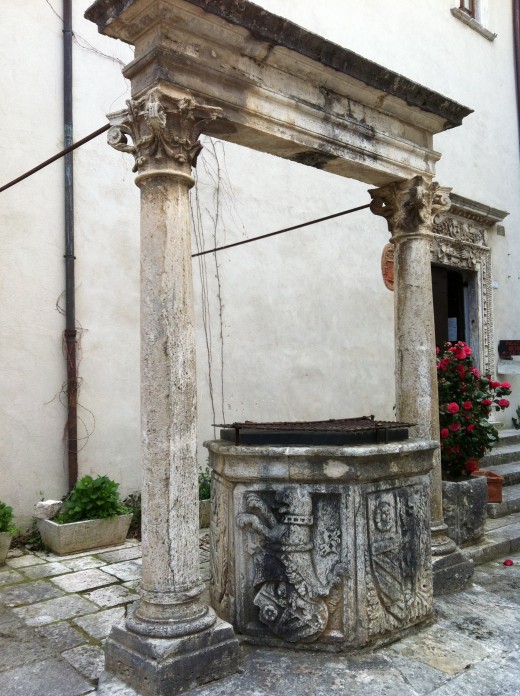
Baroque 15th Century Pitigliano Catheral Facade
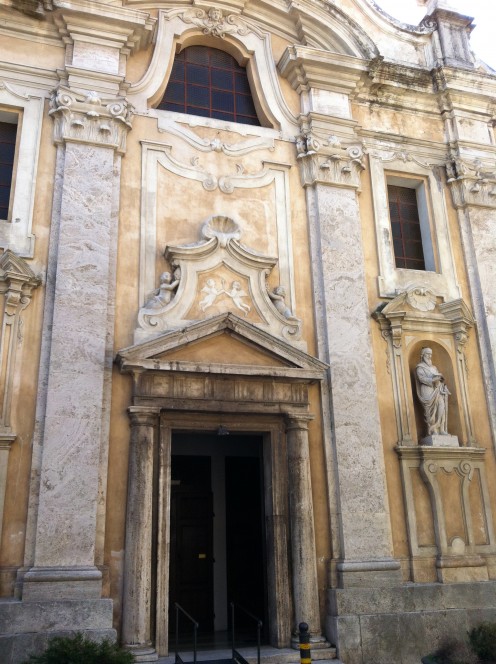
The Jewish Synagogue
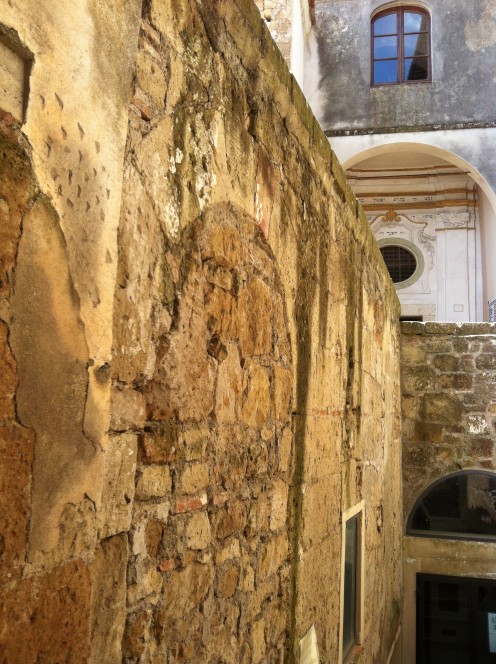
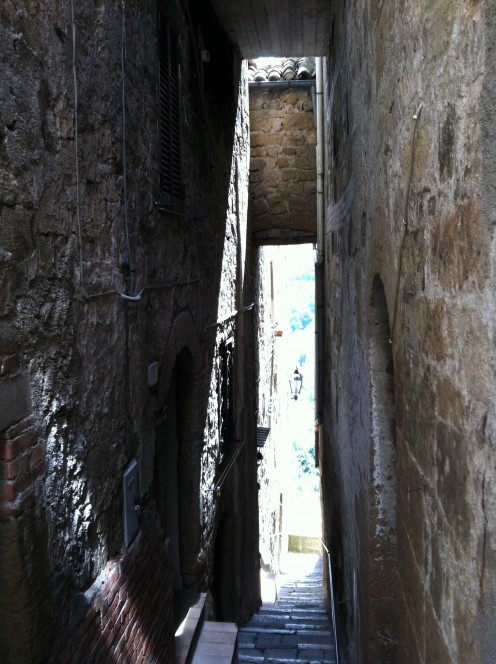
Jewish Food In the Ghetto of Pitigliano
Because Pitigliano was a separate 'city' state, the Jewish people, fleeing from insecurity in Rome felt safe when they crossed the Tuscan border. Pitigliano is the southernmost town in Tuscany. Indeed the Jewish settlers lived in complete harmony with the inhabitants of the old 'city'.
But Pope Cosimo 11, at the beginning of the sixteenth century, during a Catholic counter-reformation period decided that the Jewish people in Pitigliano should all be segregated into a Hebrew quarter of the town.
Story has it that a stick knocked at their door which meant they had to leave the home they lived in. From this black tale comes the story of a loaf of desert bread. The loaf is 20-30 centimeters long (stuffed with dried fruits honey and orange peel) that resembles that stick. It is a delicious specialty of the ghetto bakery 'Il forno delle Azzime' today - and we buy it at Christmastime because there is something very Christmas about its flavor.
You may still buy Kosher wine in Pitigliano made under the supervision of the Rabbi, visit the local caves carved in tufo, which are a testimony to the Jewish communal life. You can also visit the Kosher butcher's shop canteen, a dry cleaners and the small Jewish cemetery below the butte.
The synagogue (which dates back to 1598) with the Ritual Baths and the Museum of Jewish Culture are all in this fascinating part of the city were the streets are so narrow, you can only just get through!
The Jewish population did survive Nazi occupation of Italy, but fled, leaving very few inhabitants in the city.
For further information you may contact them at Associazone La Piccola Gerusalemme, tel 0564 614230
Bronze Statue of IL Villano
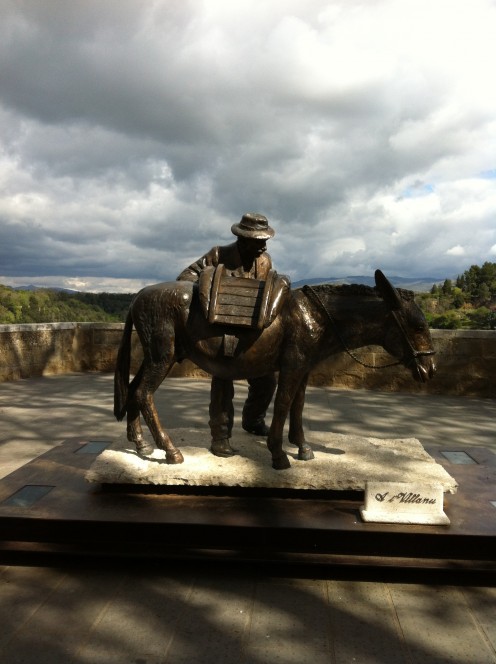
Villano
Father I want to know who is Villano?
My son, if you think of a man praying
hat in hand, on his knees
calling God, while he thinks about someone whose crying, then swears,
then asks forgiveness
wiping the sweat off his brow, stroking an ear
of corn, that's Villano.
If you see someone smiling while picking golden grapes
or crying and despairing for the delusions of human beings
who takes his tools and with strong calloused hands
or who sits in a field when tiredness torments his limbs
who re-find his strength
that, my son is Villano.
If you know a man who loves the smell of three leaf clover
and the smell of hay
who loves producing perfumed fruit,
who loves tranquility and peace
who loves the purest stream
the dew of the morning sun
then, my son you are in the presence of God
and his favorite
you can shake his hand
because he has the noble title of Villano
Bronze Sculpture of Villano and his Donkey
One of my favorite pass times in Pitigliano, (which is 40 minutes from where I live) is it to sit in a quiet square and look at the bronze sculpture of a man and his donkey 'Villano'. After walking around so much history it's pleasant to contemplate today's good natured farmers here in these agricultural lands of the Maremma, the offspring of all that history!
There's a plaque next to the sculpture with the words of the poem dedicated to this modern local hero in the next column.
Saturnia
Perhaps it's time for more light relief.
Not twenty minutes away there is a 37 ° sulpher spa in the fields below the village of Saturnia.
The waters from the springs has been curing ails from rheumatism, to gout, from arthritis to nervous disorders for more than 3,000 years.
I have to return to Rome for my hospital day this coming week on Tuesday for Wednesday. Then we must return to the Poderina (somehow).
Today Hotel Terme di Saturnia have monopolized the springs; the massive marble pools with every kind of water therapy offer a divine respite from the past, pulling you into a sense of the absolute glorious present.
Travel Tips
The closest airport for Pitigliano is Rome.
The closest railway station is Grosseto.
Another word for Bed and Breakfast in Italy is 'Agritourismo'. You can find a list of local Agritourismi from the local tourist office 0564 617111
The area code for Italy from abroad is +39
Most hotels and Agritourismi speak enough English to make a reservation. Good luck!
Agritourismo Tuscany
For your perfect weekend in Pitigliano in Southern Tuscany here is a carefully selected choice of three different accommodations in or around Pitigliano to suit any budget or desire.
- A smart 17th century refurbished hotel the heart of Pitigliano with every chique comfort, beamed ceilings and all -
Hosteria il Ceccotino
- A Bed and Breakfast slightly out of town but oh so wonderfully comfortable -
Locanda Ilune
- A nice hotel close to the town with a pool, reasonable rates and who offer excursions and tours for small groups too -
The Hotel Corano
- How to Order Coffee in an Italian Bar
Tips on how to feel super cool in an Italian bar ordering caffe and cornetti and how to pay for it using Italian phrases.
© 2012 Penelope Hart

